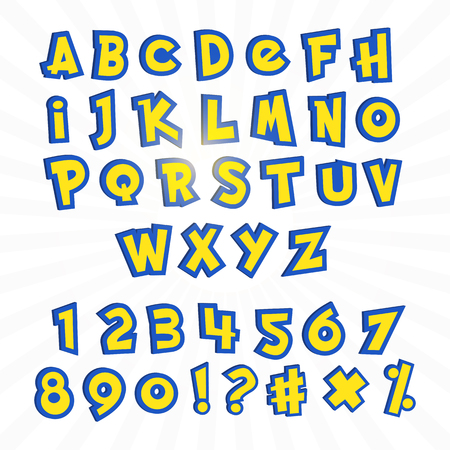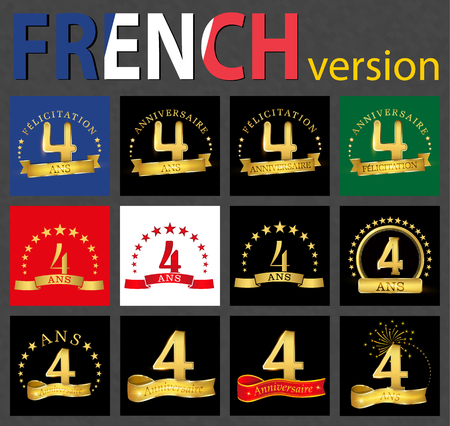Introduction to Finger Length Ratios
Finger length ratios, particularly the comparison between the index (2D) and ring (4D) fingers, have captured the curiosity of both scientists and the general public. Known as the 2D:4D ratio, this subtle detail of human anatomy is said to offer clues about everything from athletic prowess to personality traits. In recent years, finger length ratios have moved beyond niche scientific circles and into mainstream conversations across Britain, frequently appearing in popular science articles, television programmes, and even pub chats. The British fascination with quirky traits and light-hearted self-analysis has helped embed the concept firmly within our culture, making it a familiar topic for discussion and friendly debate. Whether considered a fun party trick or a subject worthy of genuine interest, finger length ratios provide an intriguing starting point for exploring what makes us unique.
2. The Science Behind Digit Ratios
The relationship between finger length ratios—specifically the ratio between the second digit (index finger) and fourth digit (ring finger), commonly referred to as the 2D:4D ratio—has been a topic of considerable scientific interest. This ratio is thought to be established early in foetal development and is influenced by exposure to sex hormones, particularly testosterone and oestrogen. Generally, a lower 2D:4D ratio indicates higher prenatal testosterone exposure, whereas a higher ratio suggests greater oestrogen influence.
Genetically, studies suggest that the genes responsible for hormone receptors play a crucial role in determining these ratios. The 2D:4D ratio remains relatively stable throughout life, offering a window into an individuals prenatal environment. In the context of British research, institutions such as the University of Oxford and University College London have contributed significant findings that link these digit ratios not only to physical traits but also to behavioural tendencies commonly associated with personality types.
To better understand how digit ratios are measured and what they signify biologically, consider the following table:
| Digit Ratio | Hormonal Influence | Typical Traits Linked |
|---|---|---|
| Low (Index < Ring) | Higher prenatal testosterone | Assertiveness, risk-taking |
| High (Index >= Ring) | Higher prenatal oestrogen | Empathy, social cooperation |
UK-based research has also explored variations across regions and populations within Britain, highlighting subtle differences in digit ratios among different ethnic groups and between genders. These studies reinforce the idea that while biology provides a foundation, cultural and environmental factors further shape how these traits manifest in British society.

3. Personality Traits Linked to Finger Ratios
Exploring the connections between finger length ratios and recognised personality types has become a subject of increasing interest within British psychological research. The most commonly discussed ratio is the 2D:4D ratio, which compares the lengths of the index (second) and ring (fourth) fingers. British studies have begun to unpick how these ratios may be subtly linked to certain personality traits, drawing on both empirical data and cultural observations.
British Findings on Finger Ratios
A number of UK-based surveys and university-led research projects have highlighted correlations between finger length ratios and personality tendencies. For instance, some studies conducted at British universities suggest that individuals with a lower 2D:4D ratio—where the ring finger is longer than the index finger—tend to score higher in measures of confidence, assertiveness, and risk-taking. These traits are often associated with traditional leadership roles or competitive sports, areas where British culture places considerable value.
Recognised Personality Types
In the context of established personality frameworks such as the Big Five, British studies have noted that a higher 2D:4D ratio (index finger equal to or longer than the ring finger) may correlate with increased agreeableness and sensitivity. These individuals often display strong social awareness, empathy, and collaborative skills—qualities frequently admired in British workplaces and community settings.
Cultural Nuances in Interpretation
It is important to recognise that while these findings offer intriguing insights, they reflect tendencies rather than deterministic rules. The British approach typically emphasises cautious interpretation, mindful of individual differences and the limitations of correlational data. Nonetheless, these studies contribute to an ongoing dialogue about the subtle ways biology might interact with personality within the fabric of British society.
4. British Pop Culture and Finger Length Myths
Within the tapestry of British society, finger length ratios have found their place not just in scientific discourse, but also in pop culture, urban legends, and everyday banter. From light-hearted conversations in pubs to features in popular magazines, the supposed link between finger length and personality has become a quirky talking point across the UK.
The Media’s Role in Shaping Perceptions
British media outlets, including newspapers like The Guardian and programmes such as QI, have occasionally highlighted studies on finger ratios, often with a wry sense of humour. Tabloids are especially fond of catchy headlines linking finger length to traits like aggression or romantic compatibility, feeding into public fascination while rarely delving deeply into the science.
Popular Urban Legends
In the realm of urban legends, finger ratios are said to predict everything from leadership potential to sporting ability. For instance, there’s an enduring myth that footballers with longer ring fingers are more likely to score goals—a notion sometimes cited half-seriously by fans during match-day discussions.
Finger Ratio Banter in Everyday Life
Everyday banter about finger lengths is common across Britain’s workplaces and social circles. Comments like “You’ve got a long ring finger—must be why you’re so competitive!” are thrown around playfully, reflecting a blend of curiosity and scepticism typical of British humour.
| Context | How Finger Ratios Are Referenced |
|---|---|
| Pubs | Joking about luck or charm based on finger length during games |
| Workplace | Banter about leadership skills or assertiveness linked to digits |
| Media Features | Sensational stories tying celebrities’ personalities to their hands |
| Sports Commentary | References to athletic prowess and finger ratios for entertainment value |
| School Yards | Mischievous teasing about who might be a future prime minister or rock star based on their hands |
This intertwining of science, speculation, and satire underlines how the British approach to finger length myths is both playful and sceptical. While some relish the chance for a tongue-in-cheek personality analysis, others dismiss it as pure nonsense—yet the conversation persists, colouring everything from casual chats to mainstream media coverage.
5. Public Attitudes and Everyday Conversations
When it comes to finger length ratios and their supposed links to personality, the British public often approach such theories with a characteristic blend of curiosity, scepticism, and dry humour. While scientific discussions may take place in academic circles, these ideas have also filtered into everyday conversations, becoming part of the social fabric in subtle and sometimes surprising ways.
The Pub Chat Phenomenon
In the UK, the local pub is not only a place for a pint but also a hub for lively discussion and banter. Finger length ratio theories occasionally emerge as a topic, often introduced as an icebreaker or a light-hearted way to spark debate among friends. It’s not uncommon for someone to jokingly compare index and ring fingers at the bar, speculating about who might be more assertive or risk-taking. Most Brits treat these exchanges with good-natured scepticism—there’s amusement in the idea, but few take it as gospel.
Classroom Curiosity
Within schools, particularly during biology lessons or health education, finger length ratios can become an engaging classroom topic. Teachers may use the concept to introduce genetics or to illustrate how physical traits are inherited. Students often enjoy measuring their own fingers and comparing notes, though any links to personality are typically framed as fun rather than fact. This playful investigation encourages critical thinking, prompting students to question what evidence truly supports such claims.
Cultural Scepticism and British Wit
British culture is known for its healthy scepticism and tendency to poke fun at grandiose claims. As a result, while finger length ratios might make for entertaining conversation fodder, most people remain unconvinced about any strong predictive power over personality. In fact, jokes about “pseudo-science” or “reading one’s future from their hands” are common, reflecting a general reluctance to accept such theories without solid proof.
Overall, finger length ratio theories occupy an interesting niche in British society: they serve as a springboard for humour and informal debate rather than serious self-analysis. Whether in pubs, classrooms, or everyday chatter, the subject highlights both the nation’s appetite for quirky ideas and its preference for reasoned scepticism—a balance that is distinctly British.
6. Limitations and Scepticism in the UK
While the idea of linking finger length ratios to personality traits captures public imagination, a significant degree of scepticism exists among British scientists and academics. Many experts caution that, although some studies suggest correlations between the 2D:4D ratio and certain behavioural tendencies, these relationships are often weak, inconsistent, or subject to considerable debate.
The Scientific Scrutiny
In the UK’s scientific community, rigorous methodology is valued above sensational claims. Researchers frequently highlight that most findings relating finger ratios to personality are based on statistical averages, which do not reliably predict individual outcomes. The complexity of human personality, shaped by genetics, environment, culture, and personal experiences, cannot be reduced to a single physical measurement.
Issues with Replicability
One of the main concerns raised by British researchers is the issue of replicability. Studies conducted in different populations or under varying conditions often yield divergent results. This inconsistency raises questions about the universality and robustness of any proposed links between finger length ratios and personality types.
Cultural Context and Caution
From a British perspective, there is also an emphasis on cultural context when interpreting such research. The UK’s tradition of empirical inquiry encourages healthy scepticism towards deterministic interpretations. Most psychologists and behavioural scientists in Britain would caution against drawing definitive conclusions about a person’s character based solely on digit ratios.
In summary, while finger length research continues to intrigue both the public and scientific circles in Britain, it is approached with characteristic British reserve and critical analysis. The prevailing view is that these biological markers may offer interesting clues but should never be used as standalone tools for assessing personality.
7. Conclusion: A British Takeaway
In summing up the British perspective on finger length ratios and personality, it’s only fitting to acknowledge both our curiosity and our classic sense of scepticism. While the allure of linking 2D:4D ratios to character traits might tickle the fancy of pub banter or spark a lively chat over a cup of tea, most Britons would agree that such theories are best taken with a pinch of salt. The science behind finger ratios offers intriguing correlations, but as with many things in British culture, we balance fascination with a healthy dose of pragmatism. After all, in everyday life, it’s unlikely anyone on these shores will judge a mate’s reliability or wit by measuring their fingers at the local chippy. Instead, this topic serves as a reminder of our penchant for mixing scientific curiosity with dry humour and social restraint. Ultimately, while finger length ratios make for an entertaining talking point, it’s the content of one’s character—demonstrated through actions and authentic conversation—that truly matters in British society. So next time you’re tempted to glance at someone’s hands for clues about their personality, remember: as any true Brit would say, “It’s not cricket.”

